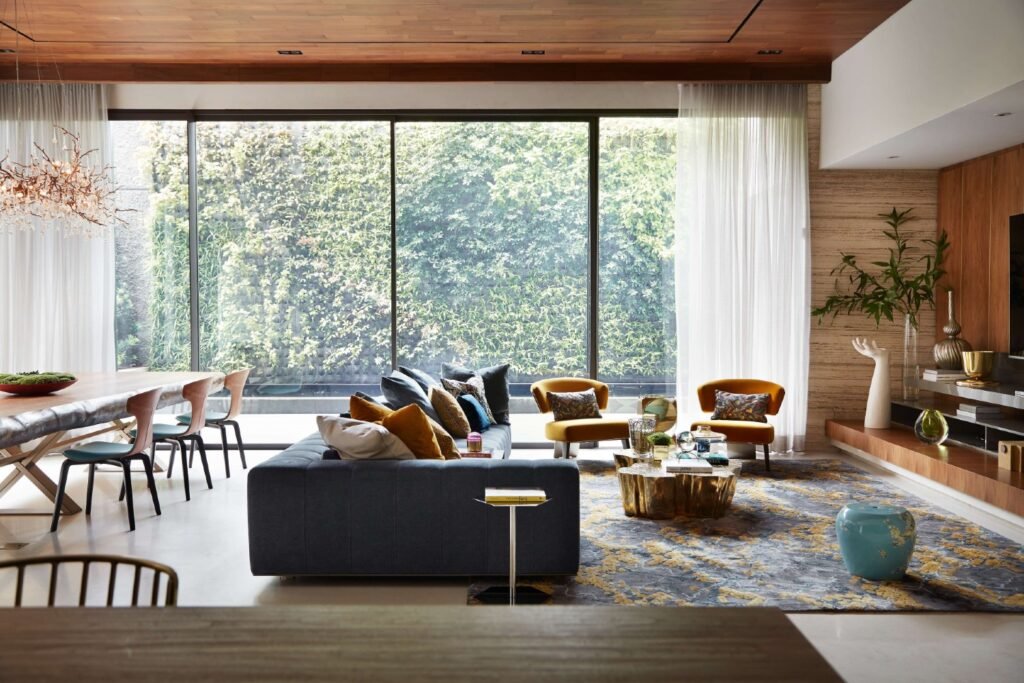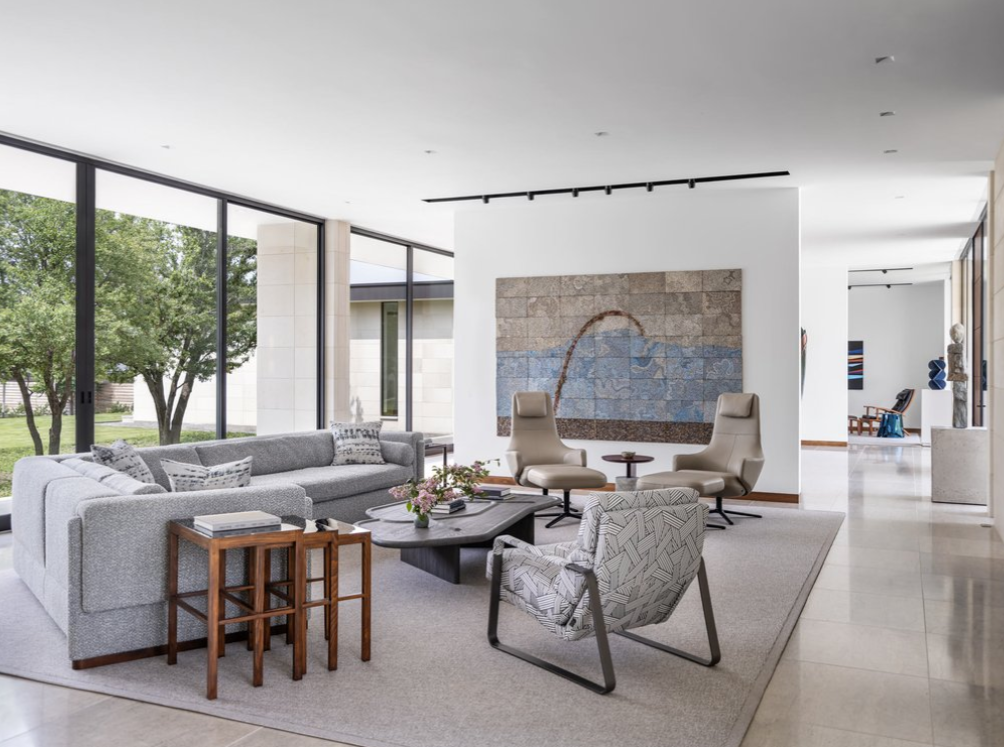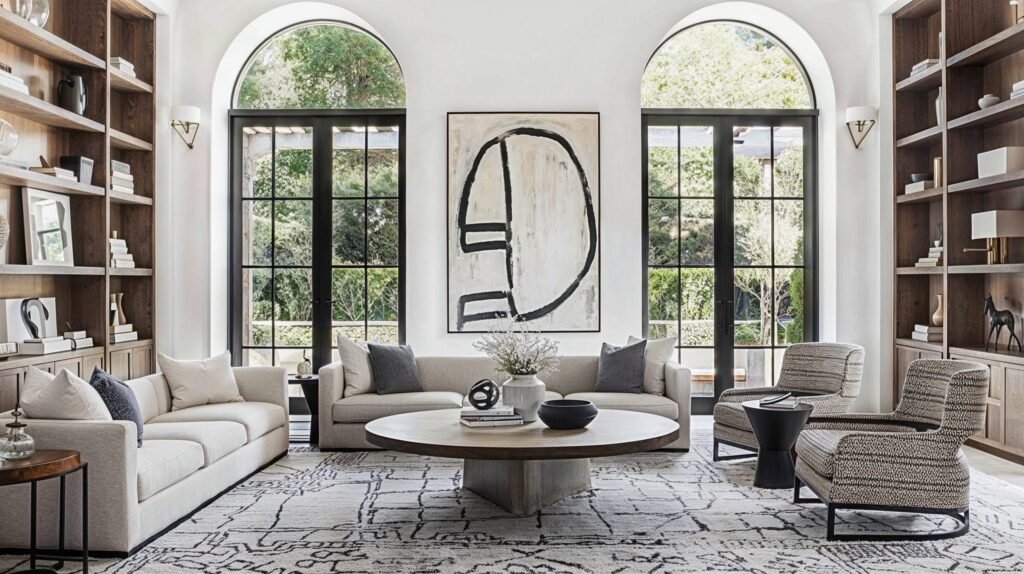Interior Design Mistakes To Avoid Designing a space that balances aesthetics and functionality requires careful planning. Many homeowners unknowingly make errors that compromise their home’s potential. Below, we explore five common interior design mistakes and how to avoid them for a harmonious, practical living environment.
Selecting Incorrectly Sized Furniture Interior Design Mistakes To Avoid

Choosing furniture that doesn’t suit the room’s proportions disrupts balance and flow. Oversized or undersized pieces can make spaces feel cramped or incomplete.
The Problem with Oversized Furniture
Large furniture overwhelms smaller rooms, restricting movement and creating visual heaviness. For example, a bulky sectional in a compact living room leaves little floor space.
The Issue with Undersized Pieces
Tiny furniture in large rooms feels sparse and disjointed. A small rug under a dining table, for instance, fails to anchor the space.
How to Get It Right
- Measure first: Note room dimensions and doorways.
- Create a floor plan: Use painter’s tape to map layouts.
- Prioritize proportionality: Ensure furniture complements room size and other pieces.
Ignoring Functionality and Space Planning
Focusing solely on appearance often results in impractical layouts. A beautiful room that’s hard to navigate defeats its purpose.
Prioritizing Form Over Function
A living room with delicate, uncomfortable seating may look elegant but discourage relaxation.
Inadequate Traffic Flow
Furniture blocking pathways forces awkward detours, making daily routines frustrating.
How to Get It Right
- Define room purpose: Design around core activities (e.g., cooking, socializing).
- Plan circulation paths: Leave 36 inches for walkways and 24 inches around seating.
- Use multifunctional furniture: Opt for storage ottomans or extendable tables.
Overlooking Lighting Design
Poor lighting creates unflattering shadows, reduces functionality, and dulls ambiance.
Dependence on Overhead Lighting

Single ceiling fixtures leave corners dark and tasks like reading challenging.
Neglecting Natural Light
Heavy curtains or poorly placed furniture block sunlight, making rooms feel dreary.
Inconsistent Lighting Temperatures
Mixing warm (yellow) and cool (blue) bulbs in one room feels chaotic.
How to Get It Right
- Layer lighting: Combine ambient (chandeliers), task (desk lamps), and accent (spotlights).
- Maximize natural light: Use sheer curtains and position mirrors opposite windows.
- Match color temperatures: Stick to 2700–3000K for warmth or 4000K for crispness.
Creating Cluttered or Overcrowded Spaces
Too many items compete for attention, causing stress and visual fatigue.
Too Many Furniture Pieces
Excess seating or tables cramp rooms, leaving no breathing space.
Excessive Decorative Items
Dozens of small trinkets on shelves create disorganization.
Inadequate Storage Solutions
Clutter accumulates without proper cabinets or organizers.
How to Get It Right
- Edit ruthlessly: Keep only meaningful or functional items.
- Use vertical storage: Install floating shelves or tall bookcases.
- Follow the 20/80 rule: Leave 20% of surfaces empty.
Mismatched or Inconsistent Design Styles
A disjointed aesthetic lacks cohesion and feels unsettling.
Rigidly Matching Everything
Identical furniture sets appear flat and lack personality.
Combining Incompatible Styles
Mixing farmhouse tables with ultra-modern chairs without unifying elements feels jarring.
Ignoring Personal Style

Spaces designed for trends, not inhabitants, feel impersonal.
How to Get It Right
- Choose a unifying element: Repeat colors, materials, or shapes across styles.
- Limit style combinations: Stick to 2–3 complementary aesthetics (e.g., coastal and Scandinavian).
- Add personal touches: Display heirlooms, travel souvenirs, or handmade art.
Also Read : Interior Design Hacks: How To Make Small Spaces Feel Bigger
Conclusion
Avoiding these five mistakes—improper furniture sizing, poor functionality, inadequate lighting, clutter, and inconsistent styles—ensures spaces that are both beautiful and livable. Focus on intentional choices that reflect your needs and tastes. Great design evolves over time, so allow rooms to adapt as your lifestyle changes.
FAQs About Interior Design Mistakes
How important is functionality in interior design?
Functionality ensures comfort and usability. A stunning room that’s impractical will frustrate users over time.
What’s the best lighting strategy?
Layer ambient, task, and accent lighting. Use dimmers for flexibility and mirrors to amplify natural light.
How do I choose the right rug size?
Ensure all furniture legs fit on the rug or at least the front legs. For dining rooms, add 24–36 inches beyond the table.
Can I mix design styles?
Yes, but maintain cohesion through shared colors, materials, or era-inspired details (e.g., mid-century curves with modern minimalism).
How do I reduce clutter?
Edit items seasonally, use hidden storage (under-bed boxes), and display only your favorite pieces.
Should I follow trends?
Incorporate trends through easily replaceable items like throw pillows or wall art, not permanent fixtures.
How do I create a focal point?
Highlight existing features like fireplaces or large windows. Add statement pieces like bold artwork or sculptural lighting.
Why is texture important?
Texture adds depth and warmth. Combine materials like linen, wood, and metal to prevent flatness.
What’s the biggest furniture mistake?
Pushing all furniture against walls. Float pieces to create intimate conversation areas.
How do I balance color schemes?
Follow the 60-30-10 rule: 60% dominant color, 30% secondary, and 10% accent. Use neutral bases for versatility.
This article provides actionable insights to create spaces that are visually appealing, functional, and uniquely yours. By sidestepping these common pitfalls, you’ll craft a home that delights and endures.





